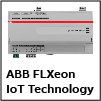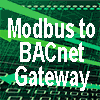|
Roadmap
to Open Programming Language Continued….
This article continues to
develop a
road map to an open control programming language standard by examining
the
difference between IEC 61131-3 standard and the proposed open
instruction set architecture.
|
 Nirosha Munasinghe MBusIT
BSc BE (Hons) (Melb)
Product
Development Manager,
Open General Nirosha Munasinghe MBusIT
BSc BE (Hons) (Melb)
Product
Development Manager,
Open General
Contributing Editor
|
Embracing
change in control programming languages created a plethora of
discussions among the who’s who of the BAS industry last month. The
discussions indicated the resistance against change in the BAS
industry and the past attempts to open up the control programming
paradigm by the IEC 61131-3 standard. This article continues to
develop a
road map to an open control programming language standard by examining
the
difference between IEC 61131-3 standard and the proposed open
instruction set architecture. It also outlines the socio cultural
issues behind the open control language in the BAS
industry.
The
articles referenced above:
The Past and
Future of Control Languages
Roadmap for Control Programming Language Evolution Part 1
IEC-61131-3
is the first vendor independent standard programming
language for industrial automation. It provides multiple language
support for control programming, allowing the user to select the best
language that is best suited to a particular task or user preference.
The standard is also hardware independent increasing level of software
reusability. IEC-61131-3 as defined suits the following five PLC
programming languages:

The
user selects the language and the hardware supports the
interpretation of the language. Building automation supports similar
languages but the implementation is closed to each vendor. For example
many BAS vendors support structured text languages. Although the syntax
may look similar at a user level, the interpretation of the complied
output is different from vendor to vendor. Therefore the BAS
industry requires a similar standard to IEC-61131-3 to further open up
the industry.
How
different is the “Open Instruction Set” road map suggested in last
month article to IEC-61131-3? The primary difference is that
IEC-61131-3 defines the five different programming languages and its
syntax and taxonomies. The manufacturers user interface must fit to
these languages and its respective rules to comply with the standard.
The open instruction set proposal does not define the programming
language.
It only defines a standard for the output of the programming language,
which is transferred to the devices to interpret. Therefore the BAS
manufacturers can choose any programming language style to match their
customer preference, but once the program is parsed and compiled, it
must be converted to the open instruction set. The following diagram
illustrates the general flow of the BAS program from the time user
programs
using a user interface to final interpretation from the device.

In open instruction architecture the
program is parsed to open
instruction set and every device which supports the standard, has an
interpreting engine to execute the program.
How do
we implement such architecture? Not a simple task. The BAS
industry is evolving significantly with energy management paradigms and
the requirements to develop complex programs are required. Ten years
ago, a BAS system contained simple programs for fan coil unit, air
handling unit, chiller and boiler. Now, there is a requirement for many
energy saving strategies, which means the standard program from ten
years ago must be re-written to implement the changes. More complex
algorithms need to be implemented via the programming language.
Therefore greater thought and research must be conducted as to what
exactly
is required in a BAS programming language. It needs to be simple as
possible but needs the flexibility to cover the current requirements
and
evolve in the future.
How do
we move forward? An existing BAS manufacturer or a body formed
with representatives from many BAS manufacturers neesd to initiate the
removal of barriers to form the architecture. The following is an
example of a road map the body can follow to develop an open
architecture
for a control programming language.

What
are the barriers? The fundamental barrier is the resistance to
change. Currently, the only method a BAS vendor can lock them self into
a large site is via the programming language. The BAS vendor’s
proprietary software is required to change any program. An open control
language environment will truly open up the BAS industry. Many BAS
vendors prefer the perception of truly being open, while maintaining
some kind of proprietary components to maintain a barrier of entry of
other vendors to the site. In the suggested open instruction set
architecture, the BAS vendor still can maintain a sound competitive
advantage. The architecture does not have a set user interface for the
programming language as long as the output of the language is converted
to the instruction set. Therefore, it will be up to the BAS vendor to
define the actual user interface for the programming language, whether
it will be graphical, structured, text, XML, C, JAVA or multiple
combinations. Every BAS vendor will have a different user
interface. It will be up to the BAS vendor to complete the market
research and develop the user interface to capture the market. The open
instruction set will be hidden on an abstract layer from the user
interface.
Therefore the user interface will be the key feature to winning the
market. The BAS vendor with an easy to use, yet flexible programming
user
interface, can capture the market to gain a competitive
advantage.
footer

[Click Banner To Learn More]
[Home Page] [The
Automator] [About] [Subscribe
] [Contact
Us]
 Nirosha Munasinghe MBusIT
BSc BE (Hons) (Melb)
Nirosha Munasinghe MBusIT
BSc BE (Hons) (Melb)



